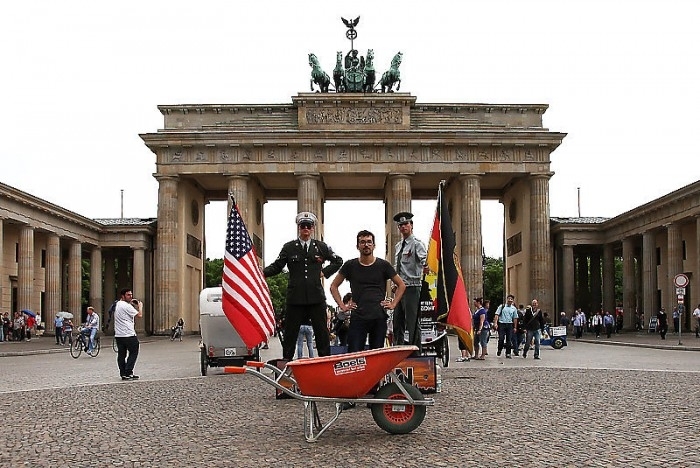
Berlin Mauer – A Gesture of Passage
In moments of historical rupture, human creativity often emerges from necessity. During the Cold War, the sudden construction of the Berlin Wall severed not just geography, but intimacy—dividing families, lovers, and lives overnight. In response, Berliners imagined and enacted improbable escapes: digging tunnels, building homemade balloons, even crafting personal zeppelins. These were not artistic acts in intention, but they embodied a raw, desperate creativity—what I call a “horribly Human” instinct: to dream, to resist, to cross.
As an echo of those invisible lines and forgotten efforts, I performed a quiet action: with a wheelbarrow, I travelled to Ostkreuz, in former East Berlin. There, I collected a handful of earth. I then transported it, by subway, across the city to Westkreuz. A small gesture, perhaps. But for me, it marked a symbolic crossing—an imagined traversal of borders, time, and memory.
This act is not a reenactment, nor a reconstruction. It is a way to carry the weight of history through matter, to move soil as one might move grief or hope. To ask: what remains of division, once the wall is gone?